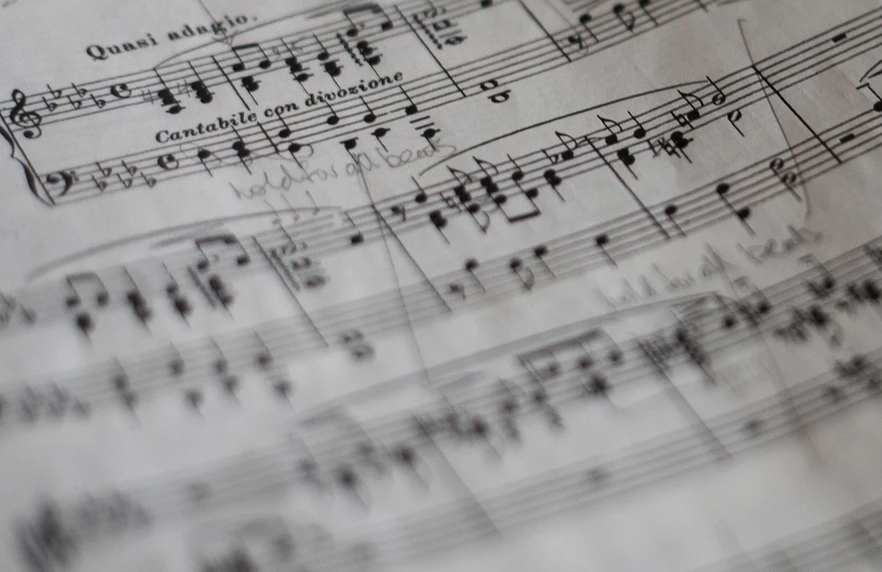In virtually every textbook and training class covering the basics of audio signal flow and mixing, there’s an “audio flowchart” or “signal flow diagram” detailing the path the signal takes between the microphone and the loudspeaker.
In most systems, the mic signal goes to a preamp where it’s boosted to the internal level of the mixer, where it’s then processed in various ways and mixed with other signals. Perhaps there are plugins or outboard equipment doing further processing.
Then it’s summed into a main bus and sent out, usually at line level, to a series of drive racks where it’s prepared to be boosted again by power amplifiers or active loudspeakers. Finally, the loudspeakers themselves turn the electronic signal back into an acoustic signal so that the audience can hear everything.
Many years ago, while working front of house for the U.S. Air Force “Airmen of Note” jazz band, an idea formed during conversations with my colleagues Tony Beardslee and Joe Dougherty. We postulated that the signal path described above only represents about half of the true path taken by musical notes in a performance. What follows is a somewhat simplified version of what I call the True Audio Path.
Composition
In what era was this written? Of course there’s a huge difference between Mozart and Madonna, even though many would say they’re both geniuses. The vast majority of classical and opera performances are still done 100 percent acoustically, so if we’re tasked with providing sound reinforcement for such music, it’s important to consider.
With modern technology, it’s certainly possible to create the illusion that a show isn’t being amplified, which means that we can achieve what the audience expects in those cases. A big band is different, although again for most of time that big bands have existed, they too were 100 percent acoustic. Surf music has a “sound,” early Rolling Stones sounds different than later Stones, and so on.
Arrangement
Perhaps we can file this under “things we can’t control” because, as audio professionals, we usually can’t influence a group’s choice of instrumentation on stage. That said, one of my pet peeves for any performing group is “everyone plays all of the time.” This is a sure formula for boring the audience after the first few songs, but amateur bands, in particular, often make this critical mistake.
How can we have an influence? Perhaps we can mix the group carefully, with a stripped down sound during verses, giving space to build during choruses. Or if the players in the band do ask our opinion (I can dream, right?), then we can ask them to have less overdrive in the guitars, use a bass patch that doesn’t muddle with the kick drum, and ask if it’s possible to consider adding variety in the arrangement.
Players
Not all of them are professionals, and even if so, some (many?) don’t know about sound (perish the thought!) so this is where we need to be diplomatic and use carefully applied psychology; at times, we’re dealing with fragile egos. Musicians are a special lot and they spend their lives developing things like chops, tone, and stage presence.
Our job is to help them, not stand in their way. If we think we’re “right” about something but it hurts the performance, then we’re wrong. The most important things we can do are be competent, confident and caring. If the musicians are comfortable on stage and can hear themselves and everyone else, they’ll perform better.
Instruments
We’ve all studied up on the various instruments we might encounter and thus know their fundamental ranges, formats, basic harmonic series, polar patterns, and so on, right? No? Then now’s the time to start.
Most acoustic instruments have very complex polar patterns. It’s very common to see instruments miked up in strange ways that show that the person doing the miking has no idea how/where sound comes out. It’s also common to see a lack of low cuts on channels where they would help a lot.
If nothing else, grab a mic and listen over decent isolating headphones while waving a mic around a person playing sax, violin, upright bass, trombone, you name it. This will provide an idea of where you like the sound. Some players do know what they like in terms of mic placement, but unfortunately others think they know but don’t. Again, this is where diplomacy can come into play.
Acoustics
Of course there’s a vast difference between a European concert hall designed in 1779 and an outdoor shed built in 1989. Each has its purpose, and the approach to sound reinforcement must follow.
One of my favorite quotes, from veteran audio pro Lloyd Kincade: “Point the speakers at the audience.” Yes this seems obvious, but all too often we see examples of loudspeakers placed in ways that don’t make a lot of sense. Mic placement and choice, too, should be guided by acoustics. It may not make sense to use an omni lav on a presenter when in a reverberant space. Likewise, some of the top vocal performance condenser mics may not work well in some environments.
Mic Choices
It’s almost eerie how so many of the great studio and performance engineers seem to be saying the same thing when it comes to mics. Basically they suggest that we should be choosing mics based on their color and polar pattern, so that “less work” has to happen later in the chain. Most of us have our favorite mics for various applications, so we already know this concept.
However, I strongly recommend that we continue to learn and grow by trying new mics for certain things, even if it’s only in rehearsals. Who would imagine that a Shure SM57 might serve as a good kick mic on occasion? By the same token, 99.99 percent of the audience isn’t there to hear the kick drum, so we need to maintain focus on the front line where “the song” takes place. Also keep in mind that mics that sound great in isolation often don’t work well in the mix.
From there, we know the rest: gain structure, subtractive EQ, attentive mixing, matching the mix to the song and to the artist and to the audience, right? Now that you’re armed with some ideas and tools as to what happens before the sounds even become electricity, I’m very much looking forward to hearing your amazing new mixes.















